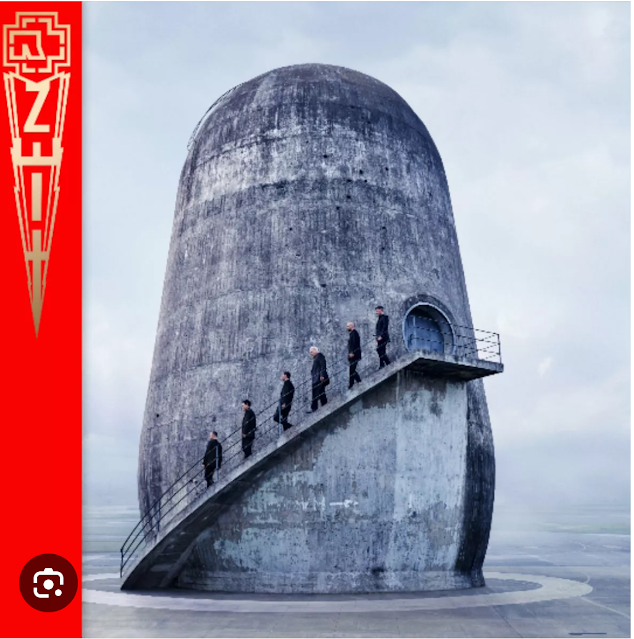After leaving the ferry at 6:30am, we started on our drive to Lesná in Poland. We would be passing Berlin on the way, so we had a few quick stop-off to make.
First, we stopped at Olympiastadion Berlín (Berlin Olympic Stadium) which was hosting the EUFA Euro 2024 football tournament. The stadium was dressed up ready for the final between England and Spain (which Spain won 2-1 on the 15th).
We snapped a few photos just as it started raining and then hopped back in the car for our next destination.
The bridge to the stadium is decorated with flags of countries:
Our next stop was the Trudelturm (Spin Tower). The Trudelturm is part of the Aerodynamic Park for Humboldt University and was originally built in 1934 by the German Aviation Research Institute (DVL). The tower was used to simulate aircraft spin to allow for experiments on how to recover falling aircraft. A model would be placed in a vertical airflow that would suspend it in a position it could be observed and experimented on. Right next to the tower is the Großer Windkanal (Big wind tunnel).
This would be cool on its own, but our main reason for stopping was that the Trudelturm was used as the backdrop for Rammstein's Zeit album (2022(:
 |
| The wind tunnel |
We then continued on to Poland, stopping next at the Parish Church of the Holy Trinity in Lubań:
We then drove past the Bracka Tower (Wieża Bracka). Built in 1318, at the order of Waldemar the Great, the 45m tall tower was designed to strengthen the defenses of the city gate and Franciscan Monastery. The tower was used several times in the defence of the city of Lubań against the Hussites and the Swedish:
By now it was still a bit to early to check into our accommodation, so we headed to Zamek Czocha - Czocha Castle (pronounced Cho-ha).
Czocha Catles was built as a stronghold in the 13th century under the order of Wenceslaus I of Bohemia. Shortly after its completion, it was given to Konrad von Wallhausen, the Bishop of Meissen.
The castle continued to change hands, becoming part of the dukedom of Henry I of Jawor and then Bolko II the Small of Silesia. It was while it was under Bolko's hands that the stone castle was built (about 1329).
In the mid 1300s the castle was taken as part of the annexation of the area by Charles IV the Holy Roman Emperor and King of Bohemia, who passed it to the noble families von Dohna and von kluks.
The Hussites captured the castle in 1427 and it was subsequently sold to the Nostitz family who held it for 250 years, strengthening and fortifying it. This was tested when the castle was sieged by the Swedish in the Thirty Years War (1618-1648). It was then sold and subsequently burnt down on August 17th 1793.
The ruins were purchased by Ernst Gutschow, a cigar manfacturer from Dresden in 1909 and Ernst ordered the castle remodeled to match a painting of the castle from 1703. He moved out of the castle during World War II, and it was ransacked by Russians and Poles and used to house displaced Greek refugees. In 1952 the Polish army took over the castle and used it as a secret holiday resort, removing it from official maps. In September 1996 it was opened as a hotel and tourist site.
After finishing up at the castle, we has a bit of time to burn so we drove around the area and ended up at our accommodation, "Czocha Palace&Czocha Camping - OR Czocha, Leśna", were we had a cabin. The temperature was about 25 degrees but it was very humid and we received and SMS from the Polish national authority to prepare for a thunderstorm, heavy rain and hail. In the end we had a little thunder and few hours of rain, but it wasn't too much.
The accommodation was comfy, but the WiFi wasn't working, so the boys were not happy.






































No comments:
Post a Comment